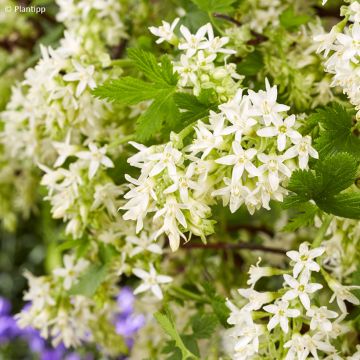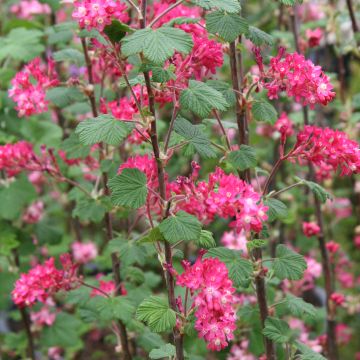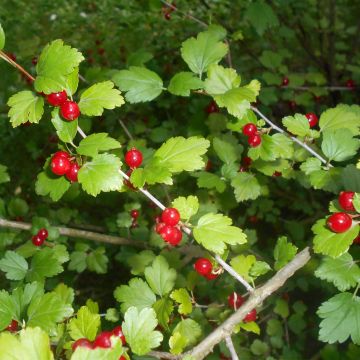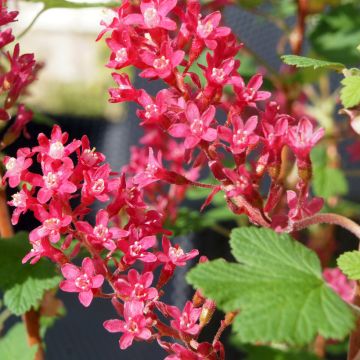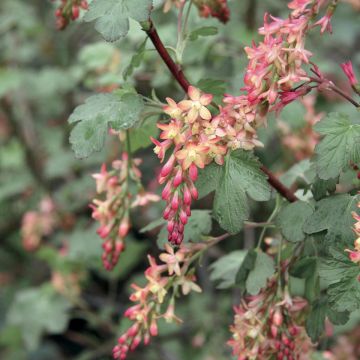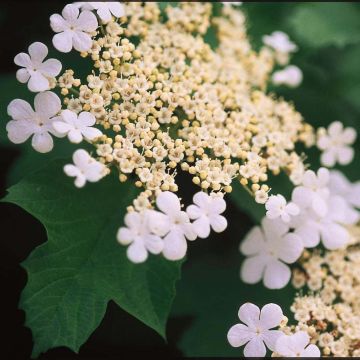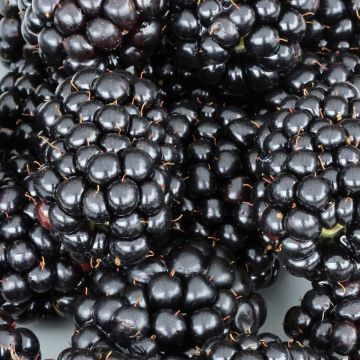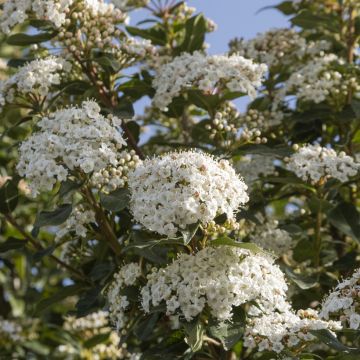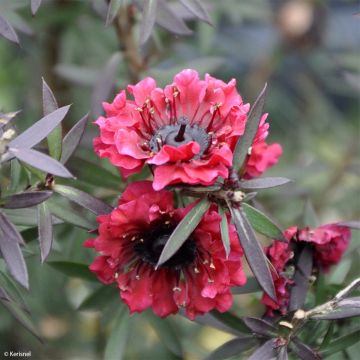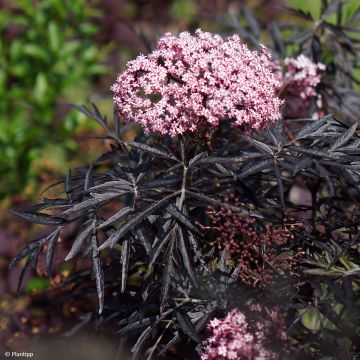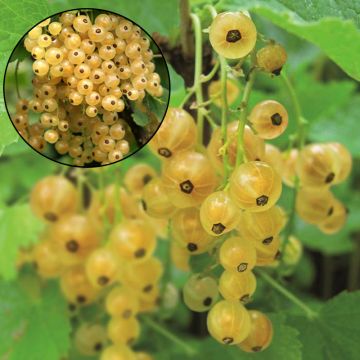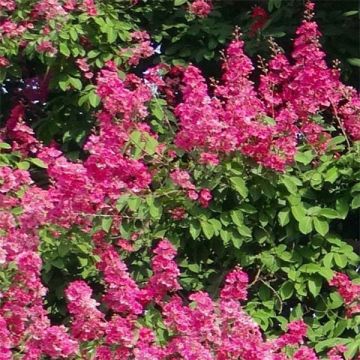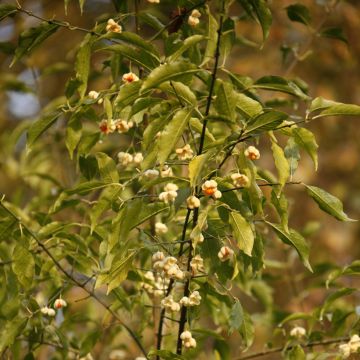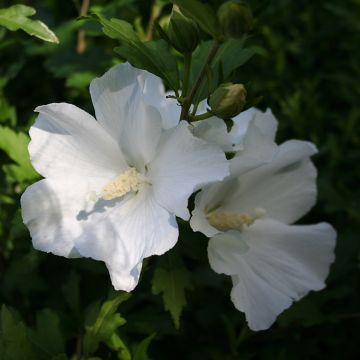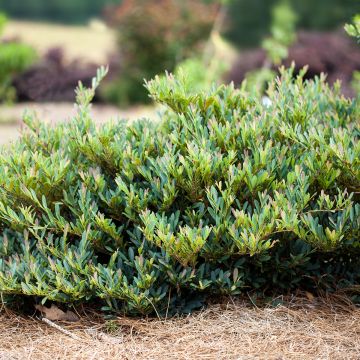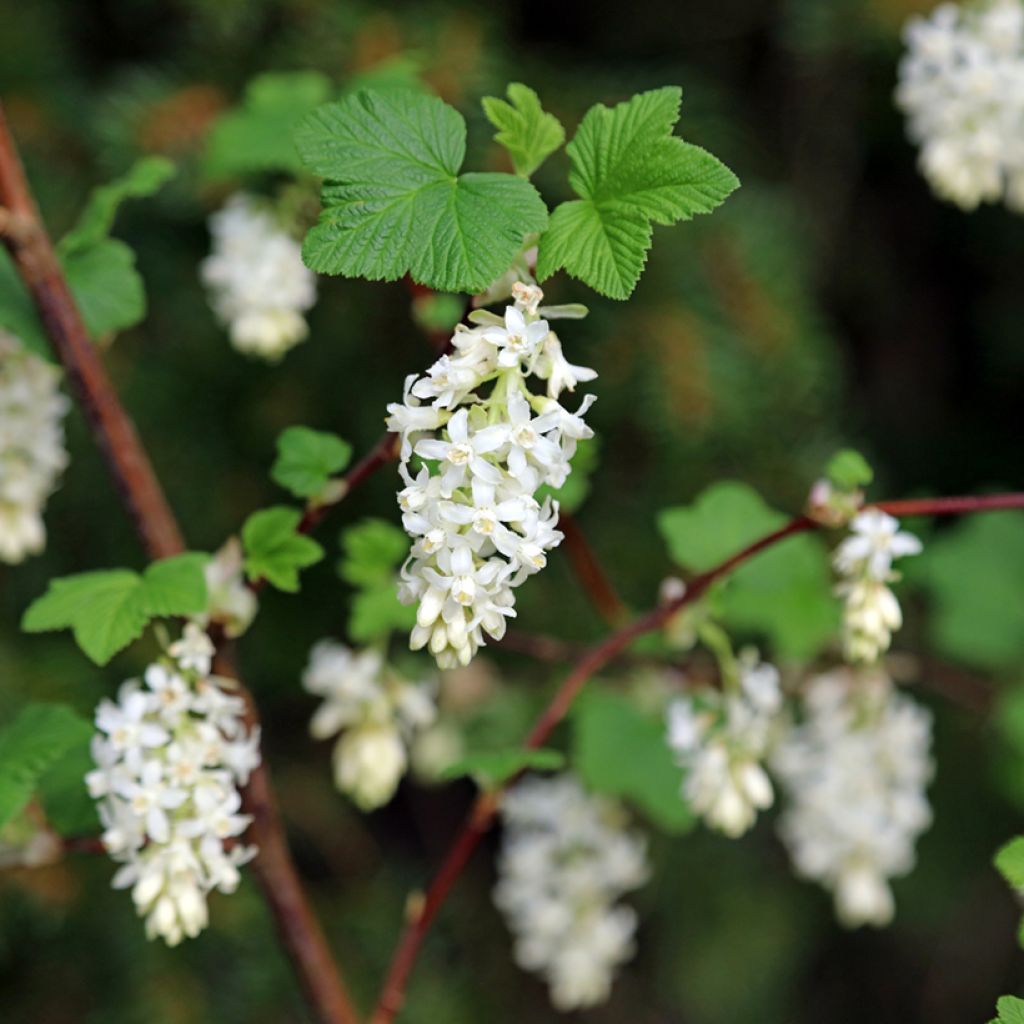

Ribes sanguineum Johannie Whitenow! - Flowering Currant
Ribes sanguineum Johannie Whitenow! - Flowering Currant
Ribes sanguineum Johannie Whitenow!
Flowering Currant, Red-flowering Currant
This item cannot be shipped to the selected country
Delivery charge from €5.90
More information
Schedule delivery date,
and select date in basket
This plant carries a 24 months recovery warranty
More information
We guarantee the quality of our plants for a full growing cycle, and will replace at our expense any plant that fails to recover under normal climatic and planting conditions.
From €5.90 for pickup delivery and €6.90 for home delivery
Express home delivery from €8.90.
Does this plant fit my garden?
Set up your Plantfit profile →
Description
Ribes sanguineum 'Johannie Whitenow!' is a vigorous and floriferous cultivar of white- flowered currant bush. This deciduous shrub blooms in early spring, at the same time as its light green foliage develops. Its leaves emit a blackcurrant aroma when crushed, which is why it is also known as "False Blackcurrant". It is a low-maintenance variety that tolerates most soils that are not too dry. It can be integrated into a flowering hedge or a shrub border.
Ribes sanguineum 'Johannie Whitenow!' is a deciduous shrub belonging to the Grossulariaceae family. It is a horticultural selection of Ribes sanguineum, a species native to the United States. 'Johannie Whitenow!' forms a spreading shrub that reaches approximately 1.80m in all directions. Its branches are quite slender and have a beautiful brown colour, ranging from mahogany to reddish. In April, earlier or later depending on the climate, the leaves and flowers appear simultaneously. The leaves, with 5 shallow lobes and toothed edges, measure between 5 and 10cm in length. They are initially very light green and darken as the season progresses.
The inflorescences are pendulous clusters, 6 to 8cm long, composed of small flowers with five pure white petals. Distributed along the length of the branches, the flowers bloom for 3 to 4 weeks. After pollination, small round black fruits covered in bloom form, measuring 7 to 8mm in diameter. The deciduous foliage falls in autumn. The white-flowered currant bush is hardy to approximately -20°C.
The White-Flowered Currant 'Johannie Whitenow!' can be planted alongside weigelas, Forsythias, Hibiscus syriacus, and Japanese quinces in a small hedge that will be in bloom from March to October. All these shrubs are hardy and low-maintenance. In a large border, it can be paired with the botanical rose Rosa glauca or other shrub roses like 'Frisson Frais' or 'Annelies'.
Report an error about the product description
Plant habit
Flowering
Foliage
Botanical data
Ribes
sanguineum
Johannie Whitenow!
Grossulariaceae
Flowering Currant, Red-flowering Currant
Cultivar or hybrid
Other Ribes - Flowering Currants
Planting and care
Plant the Flowering Currant 'Johannie Whitenow!' in ordinary, deep, rich soil that does not dry out too much in summer. This bush will thrive in partial shade or full sun, but in a non-scorching exposure. Soak the root ball in a bucket for fifteen minutes while you dig the planting hole (50 x 50 x 50 cm). Add some planting compost to the existing soil, position the root ball, backfill around it, and water thoroughly. Monitor watering during the first year, intervening during hot periods to promote root growth. Once well established, the plant is relatively tolerant.
Pruning is not necessary, except to remove dead wood or correct a slightly sparse habit. Trim the branches by one-third of their size after flowering.
Planting period
Intended location
Care
This item has not been reviewed yet - be the first to leave a review about it.
Hedge shrubs
Haven't found what you were looking for?
Hardiness is the lowest winter temperature a plant can endure without suffering serious damage or even dying. However, hardiness is affected by location (a sheltered area, such as a patio), protection (winter cover) and soil type (hardiness is improved by well-drained soil).

Photo Sharing Terms & Conditions
In order to encourage gardeners to interact and share their experiences, Promesse de fleurs offers various media enabling content to be uploaded onto its Site - in particular via the ‘Photo sharing’ module.
The User agrees to refrain from:
- Posting any content that is illegal, prejudicial, insulting, racist, inciteful to hatred, revisionist, contrary to public decency, that infringes on privacy or on the privacy rights of third parties, in particular the publicity rights of persons and goods, intellectual property rights, or the right to privacy.
- Submitting content on behalf of a third party;
- Impersonate the identity of a third party and/or publish any personal information about a third party;
In general, the User undertakes to refrain from any unethical behaviour.
All Content (in particular text, comments, files, images, photos, videos, creative works, etc.), which may be subject to property or intellectual property rights, image or other private rights, shall remain the property of the User, subject to the limited rights granted by the terms of the licence granted by Promesse de fleurs as stated below. Users are at liberty to publish or not to publish such Content on the Site, notably via the ‘Photo Sharing’ facility, and accept that this Content shall be made public and freely accessible, notably on the Internet.
Users further acknowledge, undertake to have ,and guarantee that they hold all necessary rights and permissions to publish such material on the Site, in particular with regard to the legislation in force pertaining to any privacy, property, intellectual property, image, or contractual rights, or rights of any other nature. By publishing such Content on the Site, Users acknowledge accepting full liability as publishers of the Content within the meaning of the law, and grant Promesse de fleurs, free of charge, an inclusive, worldwide licence for the said Content for the entire duration of its publication, including all reproduction, representation, up/downloading, displaying, performing, transmission, and storage rights.
Users also grant permission for their name to be linked to the Content and accept that this link may not always be made available.
By engaging in posting material, Users consent to their Content becoming automatically accessible on the Internet, in particular on other sites and/or blogs and/or web pages of the Promesse de fleurs site, including in particular social pages and the Promesse de fleurs catalogue.
Users may secure the removal of entrusted content free of charge by issuing a simple request via our contact form.
The flowering period indicated on our website applies to countries and regions located in USDA zone 8 (France, the United Kingdom, Ireland, the Netherlands, etc.)
It will vary according to where you live:
- In zones 9 to 10 (Italy, Spain, Greece, etc.), flowering will occur about 2 to 4 weeks earlier.
- In zones 6 to 7 (Germany, Poland, Slovenia, and lower mountainous regions), flowering will be delayed by 2 to 3 weeks.
- In zone 5 (Central Europe, Scandinavia), blooming will be delayed by 3 to 5 weeks.
In temperate climates, pruning of spring-flowering shrubs (forsythia, spireas, etc.) should be done just after flowering.
Pruning of summer-flowering shrubs (Indian Lilac, Perovskia, etc.) can be done in winter or spring.
In cold regions as well as with frost-sensitive plants, avoid pruning too early when severe frosts may still occur.
The planting period indicated on our website applies to countries and regions located in USDA zone 8 (France, United Kingdom, Ireland, Netherlands).
It will vary according to where you live:
- In Mediterranean zones (Marseille, Madrid, Milan, etc.), autumn and winter are the best planting periods.
- In continental zones (Strasbourg, Munich, Vienna, etc.), delay planting by 2 to 3 weeks in spring and bring it forward by 2 to 4 weeks in autumn.
- In mountainous regions (the Alps, Pyrenees, Carpathians, etc.), it is best to plant in late spring (May-June) or late summer (August-September).
The harvesting period indicated on our website applies to countries and regions in USDA zone 8 (France, England, Ireland, the Netherlands).
In colder areas (Scandinavia, Poland, Austria...) fruit and vegetable harvests are likely to be delayed by 3-4 weeks.
In warmer areas (Italy, Spain, Greece, etc.), harvesting will probably take place earlier, depending on weather conditions.
The sowing periods indicated on our website apply to countries and regions within USDA Zone 8 (France, UK, Ireland, Netherlands).
In colder areas (Scandinavia, Poland, Austria...), delay any outdoor sowing by 3-4 weeks, or sow under glass.
In warmer climes (Italy, Spain, Greece, etc.), bring outdoor sowing forward by a few weeks.

































